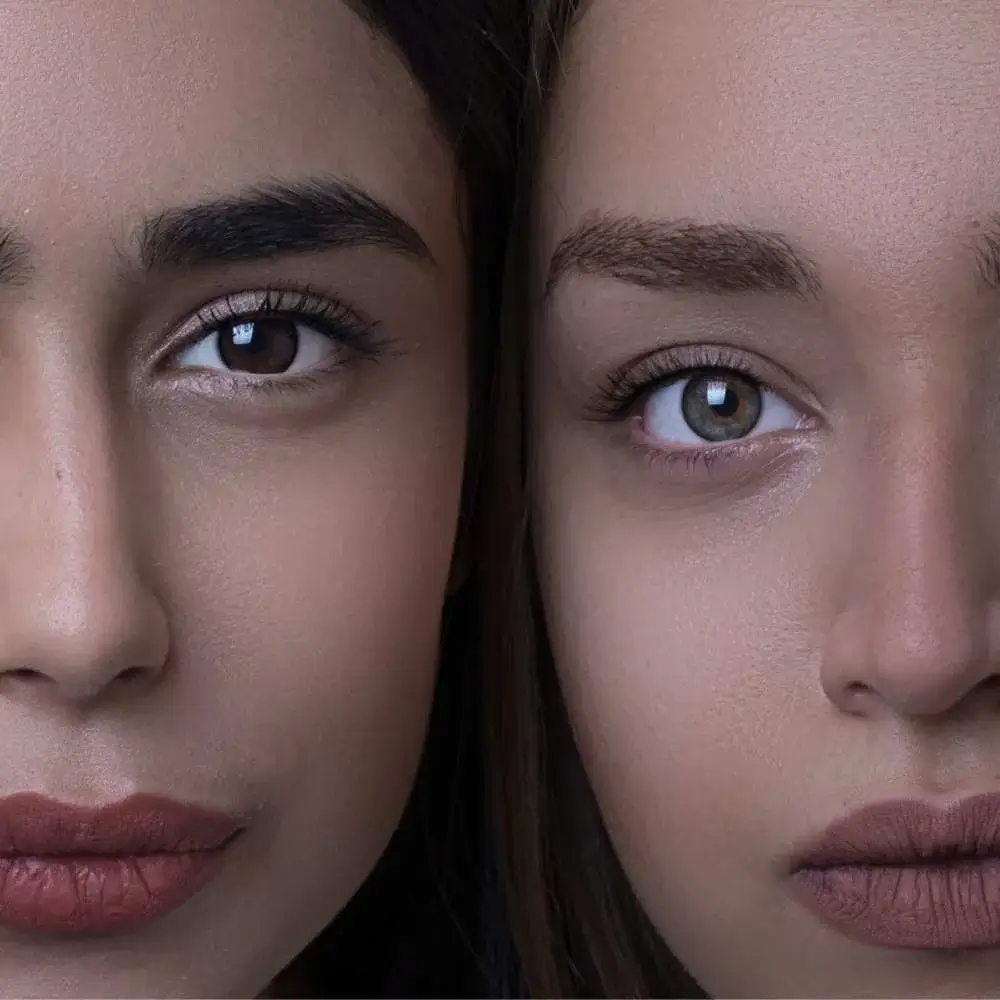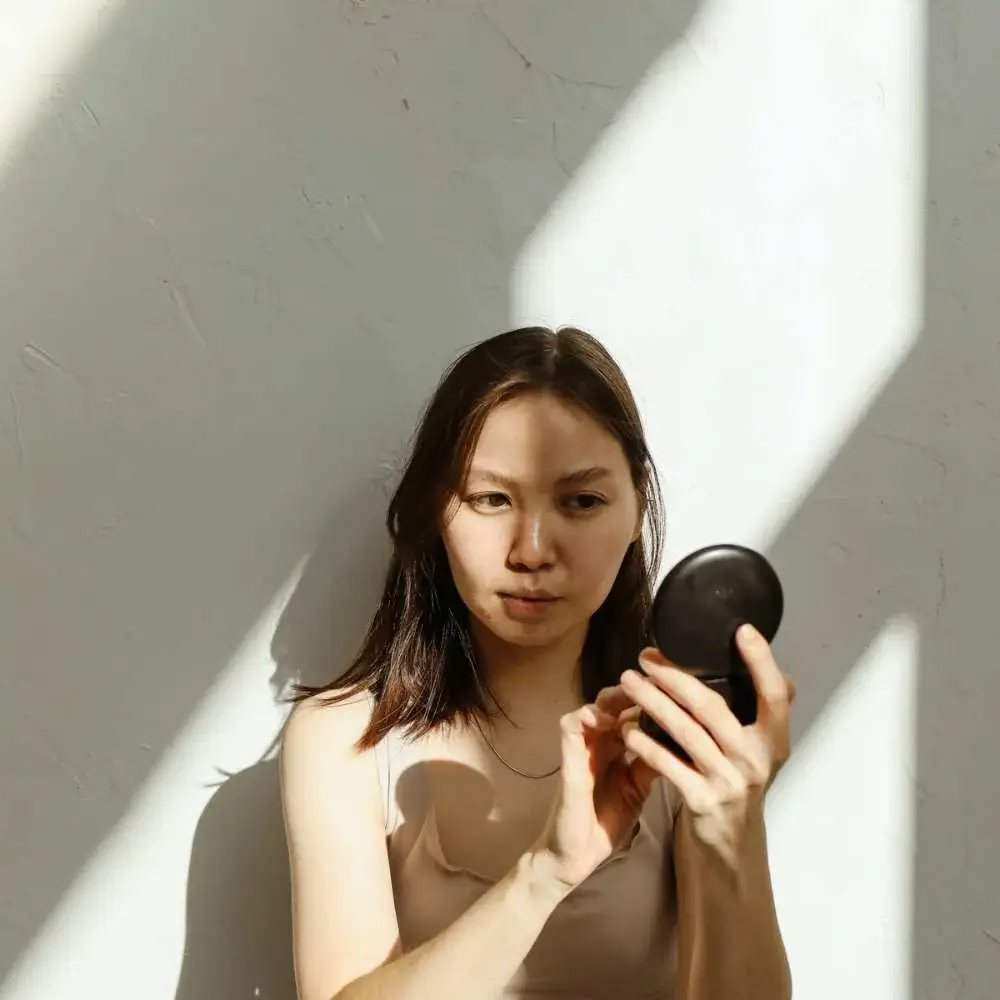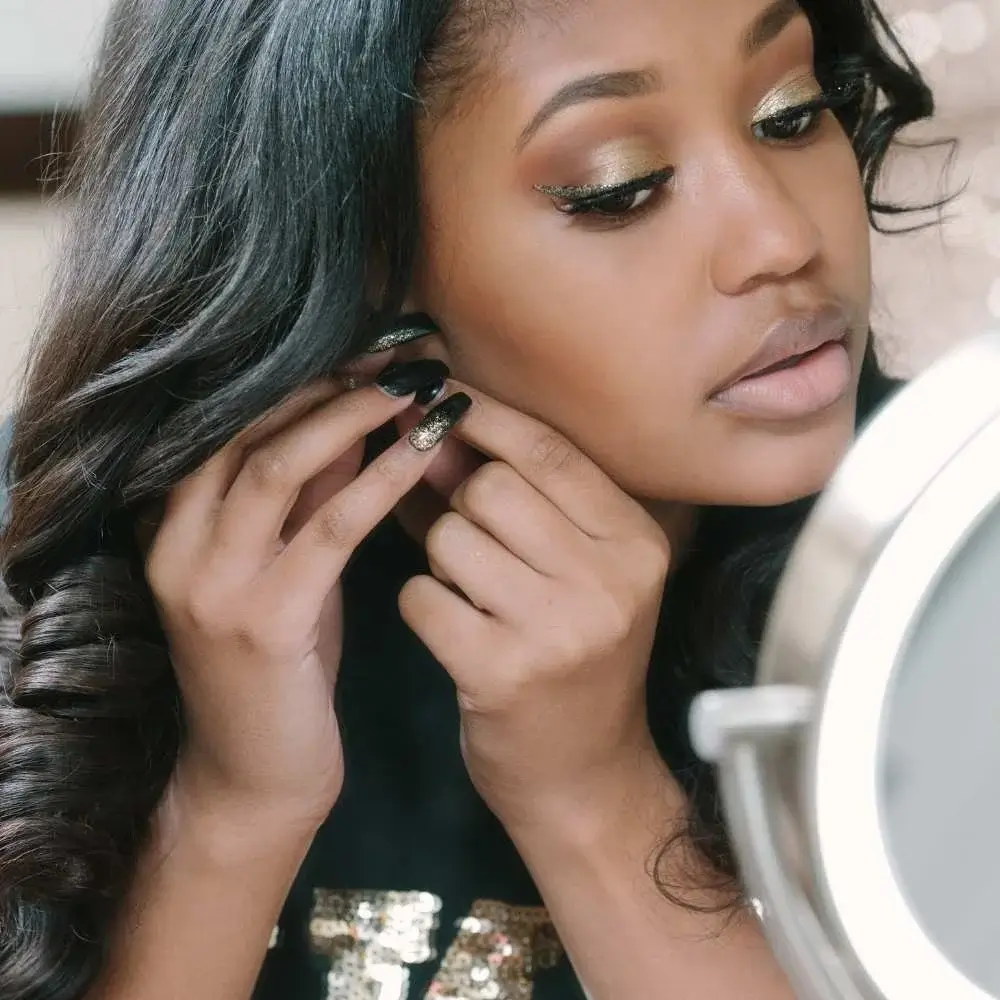Ever feel like Goldilocks trying to find the perfect match for your foundation? Too light, too dark, and everything in-between seems off? Well, you're not alone! The quest for the perfect foundation shade can be as elusive as finding a four-leaf clover. But don't fret, because we're about to embark on a beauty adventure that will guide you to your 'just right' foundation shade. In this article, we'll unravel the mystery of skin undertones, explore various techniques to match your foundation perfectly to your skin tone, and introduce you to online tools that make color matching a breeze. Get ready to say goodbye to mismatched foundations and hello to your true match!

Hit the Bullseye: Your Ultimate Guide to Flawlessly Matching Your Foundation to Your Skin Tone
Ever felt like you're playing a guessing game when trying to match your foundation to your skin tone? Don't worry, you're not alone! It's a fine line between looking like a porcelain doll or an Oompa Loompa. But fear not, fellow beauty enthusiasts, we've got some insider tips to help you hit the bullseye every time.
Think of your skin tone like a secret code that only you can crack. The first clue? Your wrist veins. Blue veins mean you're part of the cool gang, while green veins signal you're a member of the warm club. Still confused? Let's bring jewelry into the mix. If gold adorns you better, you're warm-toned. If silver is your friend, then you're cool-toned. Can't decide? Congratulations, you're a neutral ninja.
Now that you've deciphered your undertone, it's time to play matchmaker with your foundation! Start by swatching different shades on the back of your hand, it's like a mini-me for your face. And remember, just like good friends, your foundation should balance out any redness or darkness, not highlight them!
But wait, there's more! When trying out new foundations, keep an eye on how they behave throughout the day. Do they turn into a chameleon and darken (oxidize)? That's a sign you might need to reconsider your choice. Also, don't forget to blend, blend, blend! This will ensure a flawless finish and the most accurate color match.
And finally, remember, your foundation should be your skin's best ally, enhancing your natural features, not hiding them. So, whether you're the Snow White or the bronzed goddess, there's a perfect foundation shade out there waiting for you!
If textured skin is your main concern, we've got you covered! Click on the link to explore our top picks for the best foundations designed to give textured skin the love it deserves. From dry to oily skin, we've curated a selection of foundations that are game-changers. Say goodbye to endless online searches and hello to your perfect match!

The Art of Understanding Skin Undertones: A Key to Match Your Foundation Perfectly to Your Skin Tone
Ever wondered why that "perfect" foundation shade looked off on your skin? The secret lies in your skin undertone!
Let's dive into the world of color theory, where everything is not just black and white, but also cool, warm, and neutral.
Cool, Warm, or Neutral - What's Your Undertone?
Think of your skin undertone as the subtle hue underneath the surface of your skin.
Cool undertones lean towards pink, red, or blueish hues. If silver jewelry flatters you more than gold, you likely have a cool undertone.
Warm undertones, on the other hand, are peachy, golden, or yellow. Gold jewelry suits you best? You're definitely in the warm camp.
Neutral undertones are a balanced mix of both cool and warm hues. If both silver and gold look great on you, congratulations, you're a neutral beauty!
The Vein Test: A Quick Undertone Detector
One quick trick to determine your skin undertone is the vein test. Simply look at the veins on your wrist under natural light.
Blue or purple veins typically indicate cool undertones. Green veins suggest warm undertones. If your veins appear blue-green, you might have a neutral undertone.
Why Does Undertone Matter When You Match Your Foundation Perfectly to Your Skin Tone?
Understanding your skin undertone is crucial when it comes to finding your perfect foundation match.
A foundation that matches both your skin tone and undertone will blend seamlessly into your skin and look natural. On the contrary, using a foundation with the wrong undertone can make your skin look off, too pink, or overly yellow.
Embrace Your Unique Undertone
Remember, there's no 'good' or 'bad' when it comes to undertones. Every undertone is unique and beautiful in its own way. The key is to embrace your natural undertone and choose a foundation that complements it.
The quest to match your foundation perfectly to your skin tone may seem daunting, but with a little knowledge about your skin undertone, you're already halfway there!

Shedding Light On The Subject: The Role of Lighting in Helping You Match Your Foundation Perfectly to Your Skin Tone
To match your foundation perfectly to your skin tone, you need more than just the right shade. You need the right light!
Let's illuminate the importance of lighting in this foundation matching journey.
Daylight vs Artificial Light: A Tale of Two Lights
Ever noticed how different your makeup looks in your bathroom mirror compared to when you step outside? That's the magic, or sometimes horror, of lighting!
Daylight is the most truthful, revealing all colors and textures without distortion. It's like the brutally honest friend who tells you if your foundation is a perfect match or a disastrous mismatch.
Artificial light, on the other hand, can be tricky. Fluorescent light might make your skin appear cooler, while incandescent light can throw warm, yellow-toned light, making your skin look warmer.
The Golden Rule: Always Test In Natural Light
When trying to match your foundation perfectly to your skin tone, always test it in natural light. Step near a window or better yet, step outside. This will give you the most accurate depiction of what the foundation will look like on your skin.
The Changing Light of Day: Morning, Noon, and Night
Even natural light changes throughout the day. Morning light is often soft and yellow-warm. Midday light is the brightest and bluest, while evening light is warm and golden. For the most accurate match, try testing your foundation in the midday light.
Mirror, Mirror on the Wall: What's The Truest Shade of Them All?
Remember, mirrors can also distort color based on their own tint and the light they reflect. A mirror in a room filled with yellow light will reflect a different color than one in a room bathed in white light.
So, next time you're on a mission to match your foundation perfectly to your skin tone, remember to consider the lighting. It might just be the secret weapon you've been missing!

From Dry to Oily: The Role of Skin Type in Determining How to Match Your Foundation Perfectly to Your Skin Tone
Matching your foundation perfectly to your skin tone is not just about color. It's also about texture, finish, and most importantly, your skin type!
Let's delve into how understanding your skin type can make or break your foundation game.
Dry Skin: Thirsty for Hydration
If your skin often feels tight, looks dull, or has visible flaky areas, you likely have dry skin. The perfect foundation for dry skin should be hydrating and provide a dewy finish to combat the dryness.
Oily Skin: In Search of Balance
Does your face tend to shine like a beacon by midday? Then you're on the oily side of the spectrum. Foundations with a matte finish and oil-control properties will be your best friends.
Combination Skin: The Best of Both Worlds
Combination skin is a tricky one, with some areas being dry and others oily (usually the T-zone). A balanced foundation that isn't overly hydrating or too mattifying works best here.
Sensitive Skin: Handle with Care
If your skin gets red and irritated easily, it's sensitive. You'll want to look for foundations that are hypoallergenic, fragrance-free, and specifically designed for sensitive skin.
Normal Skin: The Middle Ground
Normal skin is not too dry, not too oily. Lucky you! You can play around with different types of foundations to see what finish and feel you prefer.
Why Does Skin Type Matter When You Match Your Foundation Perfectly to Your Skin Tone?
A foundation that suits your skin type will blend better and sit more comfortably on your skin. For example, applying a matte foundation on dry skin may accentuate dry patches and make your skin look patchy. On the other hand, using a dewy foundation on oily skin might leave you looking excessively shiny.
So, while the quest to match your foundation perfectly to your skin tone may seem overwhelming, remember that understanding your skin type is half the battle. Choose wisely, and your foundation will not only match your skin tone but also enhance your skin's natural beauty!

Mastering Your Match: Frequently Asked Questions About Perfectly Aligning Foundation with Your Skin Tone
Should your foundation match your skin perfectly?
Absolutely, yes! Think of your foundation as the canvas for your artistry - it should blend seamlessly with your skin. The perfect foundation match is like your favorite pair of jeans; it fits just right, feels comfortable, and enhances your natural beauty. To match your foundation perfectly to your skin tone, you'll need to consider not just your surface skin color, but also your undertones, how different lights affect your skin, and your skin type. So, embark on this exciting treasure hunt for your flawless foundation match. Remember, it's not about creating a mask, but rather enhancing your unique features. Happy matching!
Is foundation supposed to match your skin tone?
Yes, indeed! The ultimate goal of a foundation is to create a smooth, even base that mirrors your skin tone. It's like your skin, but a wee bit better. So, when you match your foundation perfectly to your skin tone, it should blend flawlessly into your skin, making it hard for anyone to tell you're wearing anything at all. Think of it as your secret weapon in your beauty arsenal, working undercover to give your complexion a little boost. So, go forth and find your perfect match—your skin will thank you for it!
How do I find my true foundation color?
First, you'll want to determine your skin's undertone - cool, warm, or neutral. Next, consider your skin type - oily, dry, combination, or sensitive, as this can influence the texture and finish of your foundation. Now, it's time for some fun: testing! Head to a store and swatch a few potential matches on your jawline. The one that disappears into your skin without much blending is your winner! Remember to check the color match in natural light for the most accurate result. And voila! You've found the key to match your foundation perfectly to your skin tone.
Should foundation be lighter or darker than your skin?
Ideally, your foundation should be neither lighter nor darker, but just right—like Goldilocks and her porridge! Your goal is to match your foundation perfectly to your skin tone for a flawless, natural look. If you go too light, you risk looking washed out or ghostly. Too dark, and you might end up with an unnatural contrast between your face and neck. So, remember, when it comes to finding your perfect foundation shade, it's all about balance. Keep things just right, and you'll have a match made in makeup heaven!
How can I match my foundation without testing?
Start by identifying your skin's undertone and type. Then, look for brands that offer detailed descriptions and shade guides for their foundations. Many even have online tools to help you find your perfect match based on other brands' shades you already use. You can also reach out to the brand's customer service for advice—they're usually happy to help! Remember, while it's not an exact science, with a little bit of sleuthing, you can definitely get close to matching your foundation perfectly to your skin tone. Good luck on your detective work!
Read our article about best oil for curly hair here!
Read our article about best vitamin c face cream here!
Read our article about best coconut oil here!
Read our article about best oil for scalp here!







